Power Query: Cleanse, Tone and Upload
13 December 2017
Welcome to our Power Query blog. This week I look at combining several Power Query functions in order to standardise some incoming data.
For today’s example, I will use my reliable fictional salespeople – but as usual, they have thrown some problems into my data.
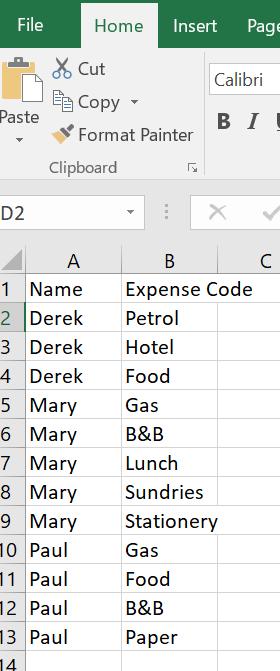
Derek has helpfully entered the expense codes as I would like to describe them, but Mary and Paul have been less consistent. I would like to change the expense codes to the standard names so that I can calculate totals, but without having to go through and change each entry manually – in a large dataset many people may have used ‘Gas’ instead of ‘Petrol’. First, I need to create a query for my data, which I do on the ‘Data’ tab in the ‘Get and Transform’ section. I opt to create a query ‘From Table’:
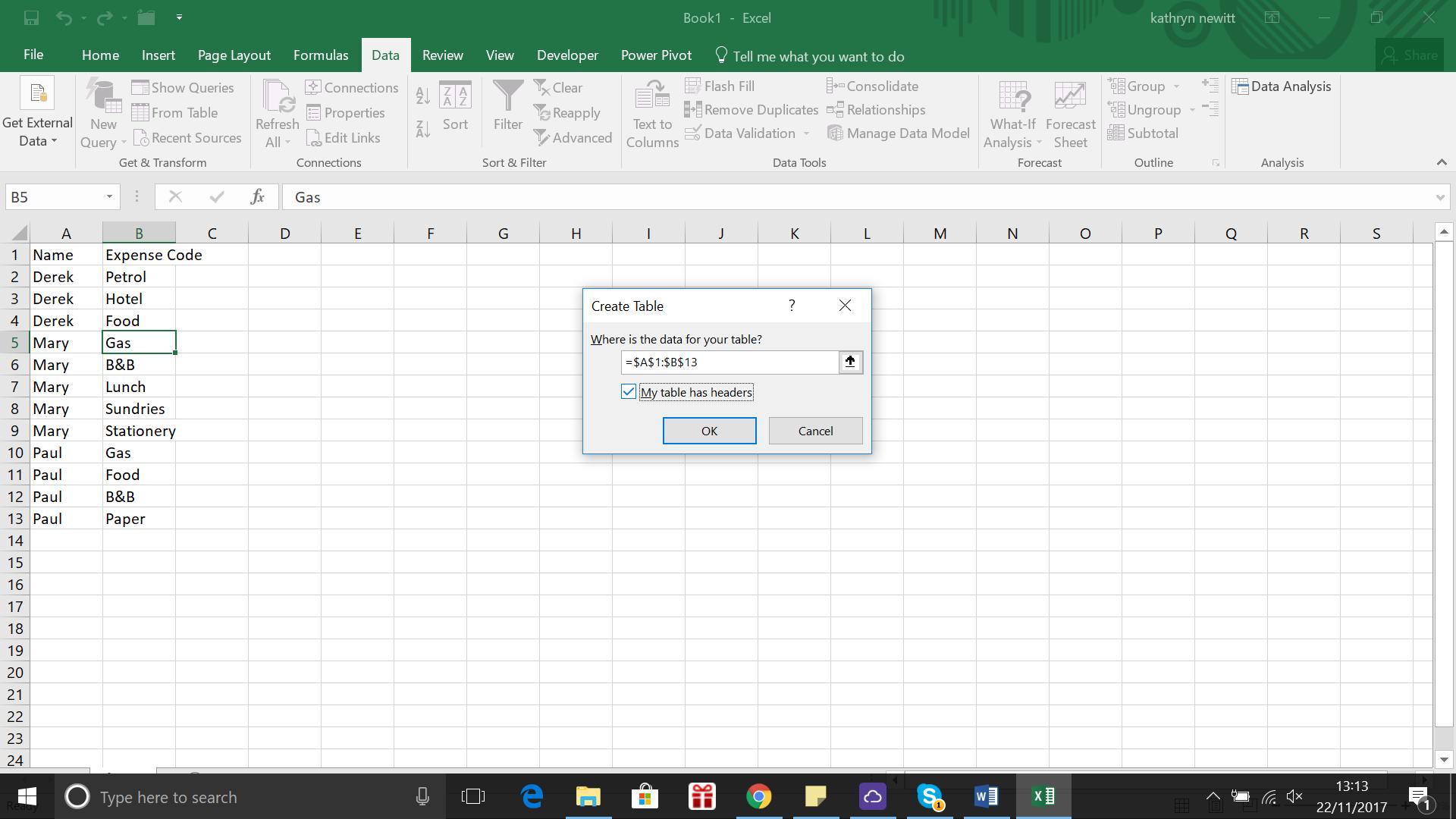
My data is not yet in a table, so this will be done as part of the query creation process; I am prompted for the boundaries and whether I have titles. I can then create my query.
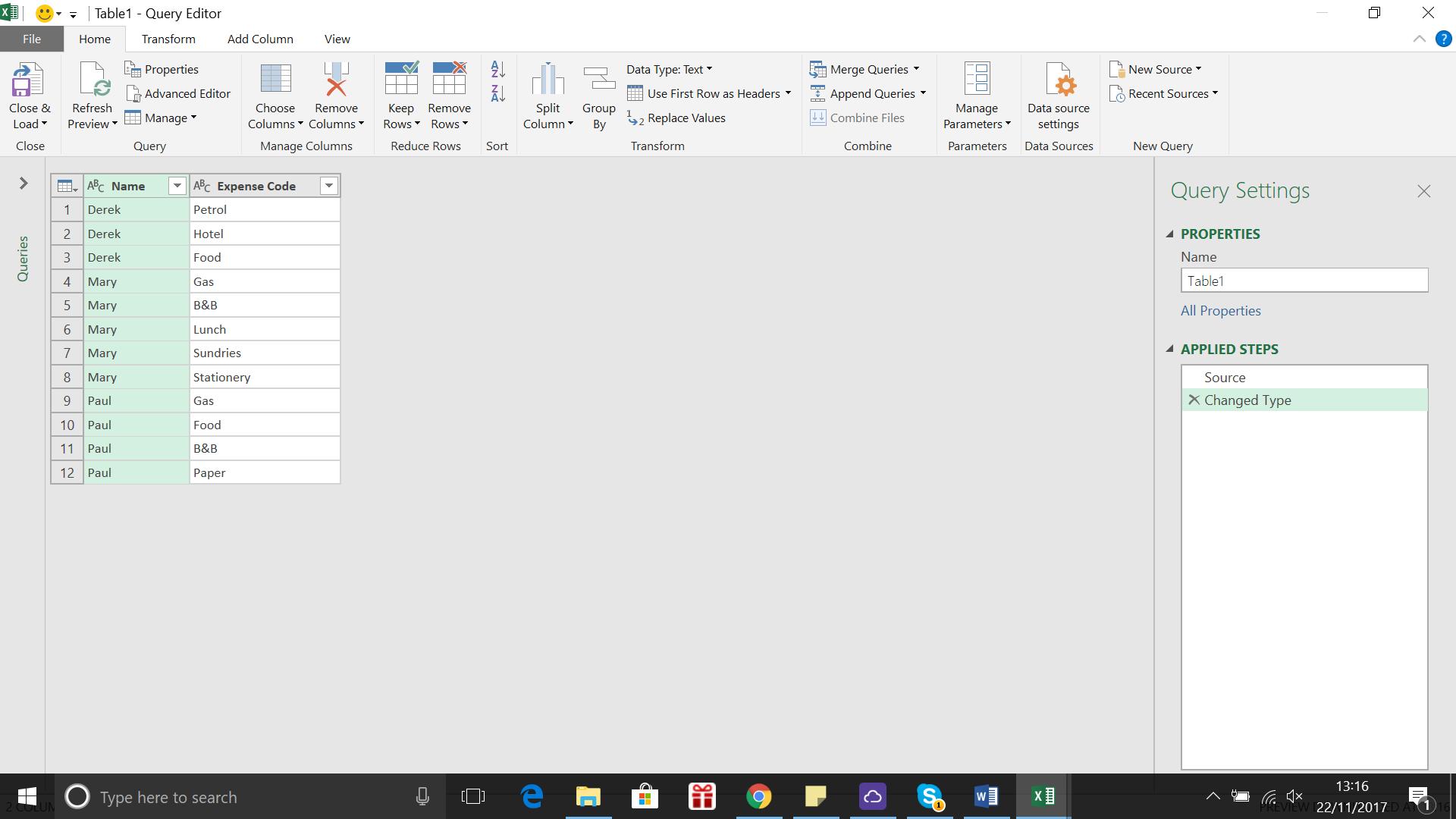
From the ‘File’ or ‘Home’ tab, I choose to ‘Close and Load To’, in order to create a connection.
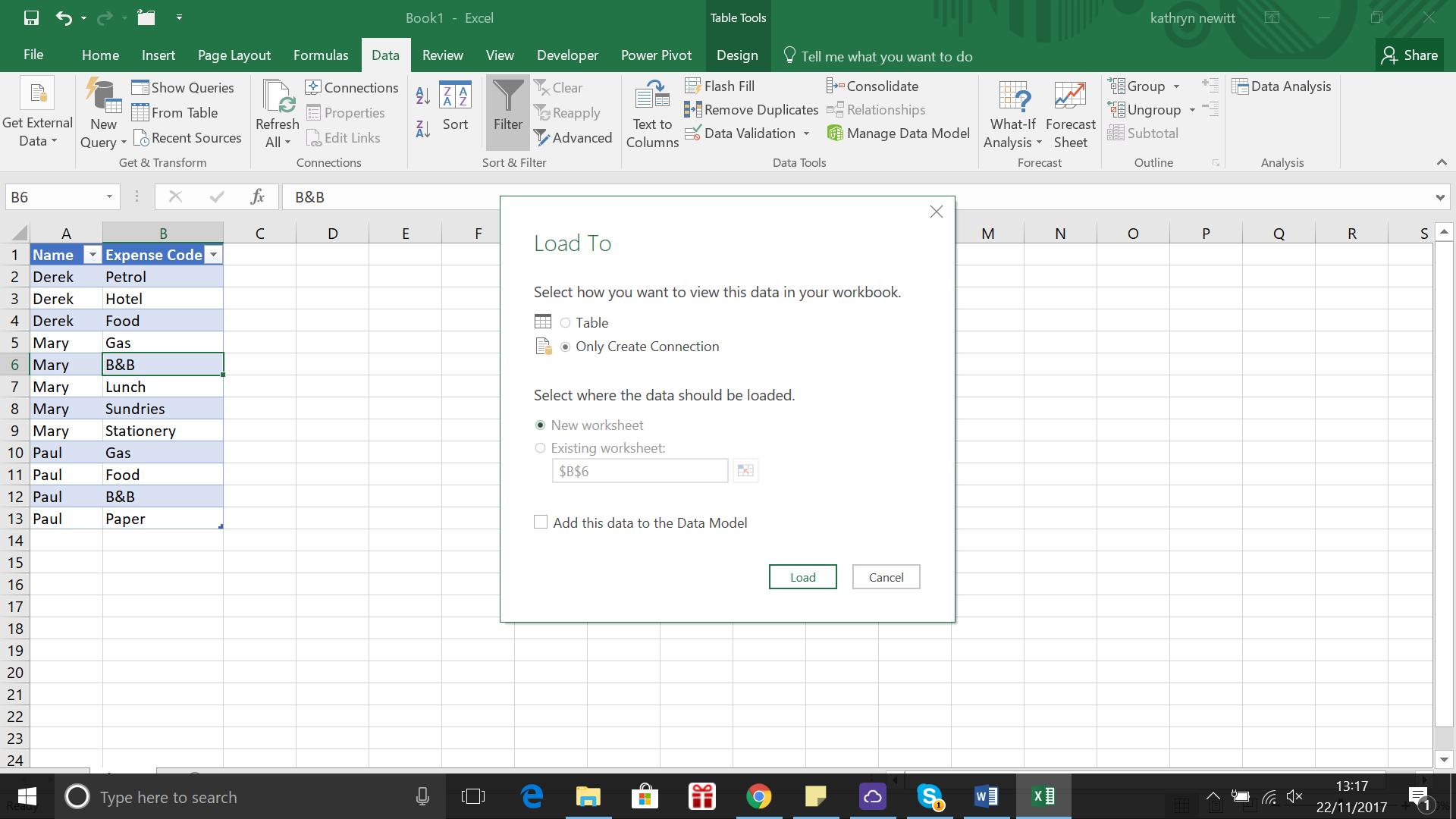
I don’t want to load data to my workbook at this point, as nothing has yet changed.
To replace the non-standard entries in Expense Code, I need a reference table. This avoids the need to ‘hard code’ anything (if you don’t know what this means ask a programmer and watch them grimace). Therefore, I right click on my query and look at my options:
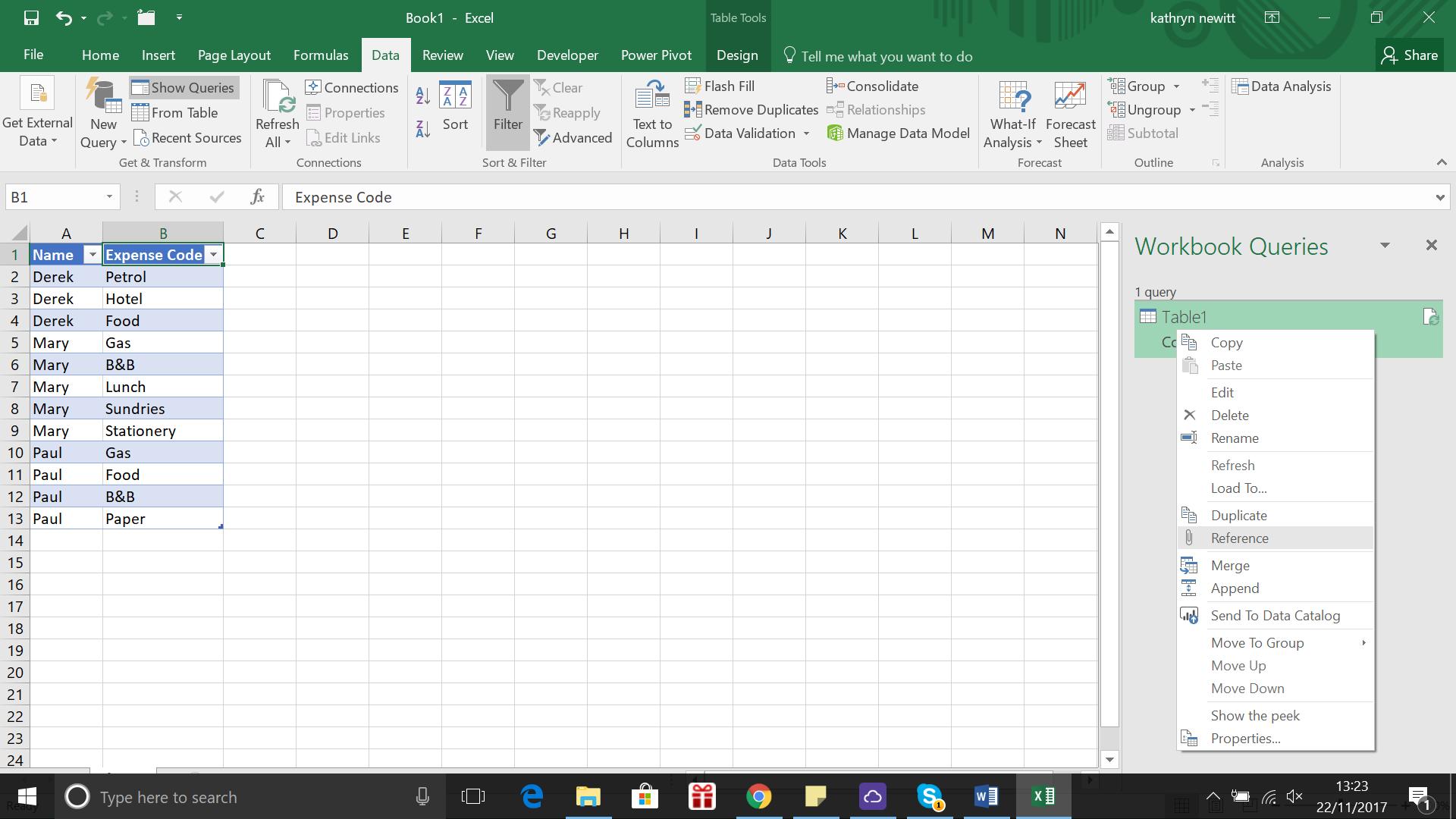
I have a ‘Reference’ option, so I choose this. The difference between ‘Duplicate’ and ‘Reference’ is subtle: if I choose ‘Reference’, the new query is based on the results of the first table, rather than replicating it entirely.
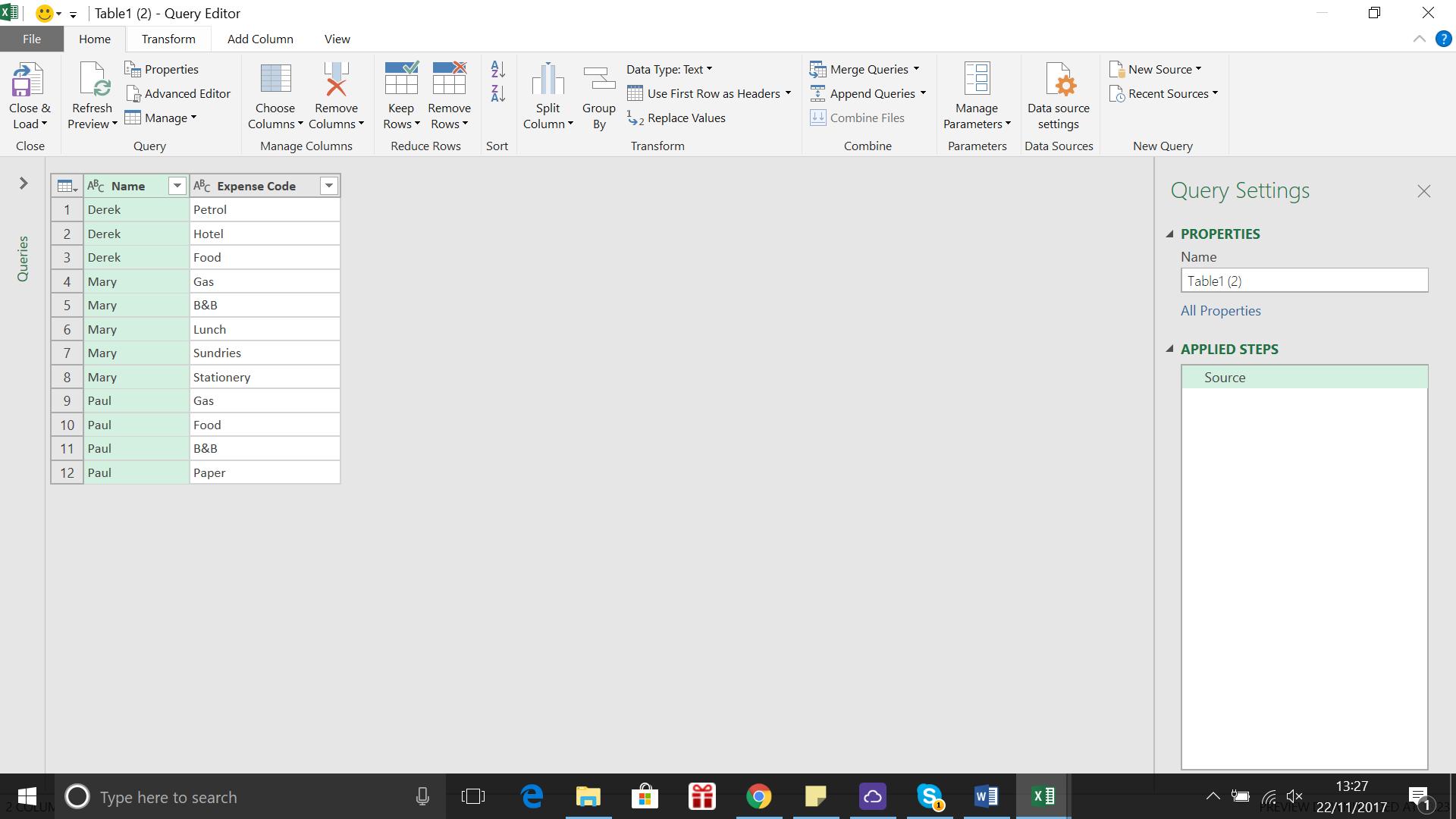
Thus, it looks just like my first table – I rename this table to ‘Expense Codes Substitutes’ so that it’s easier to understand its purpose. I remove the Name column as I am only interested in the expense codes for now.
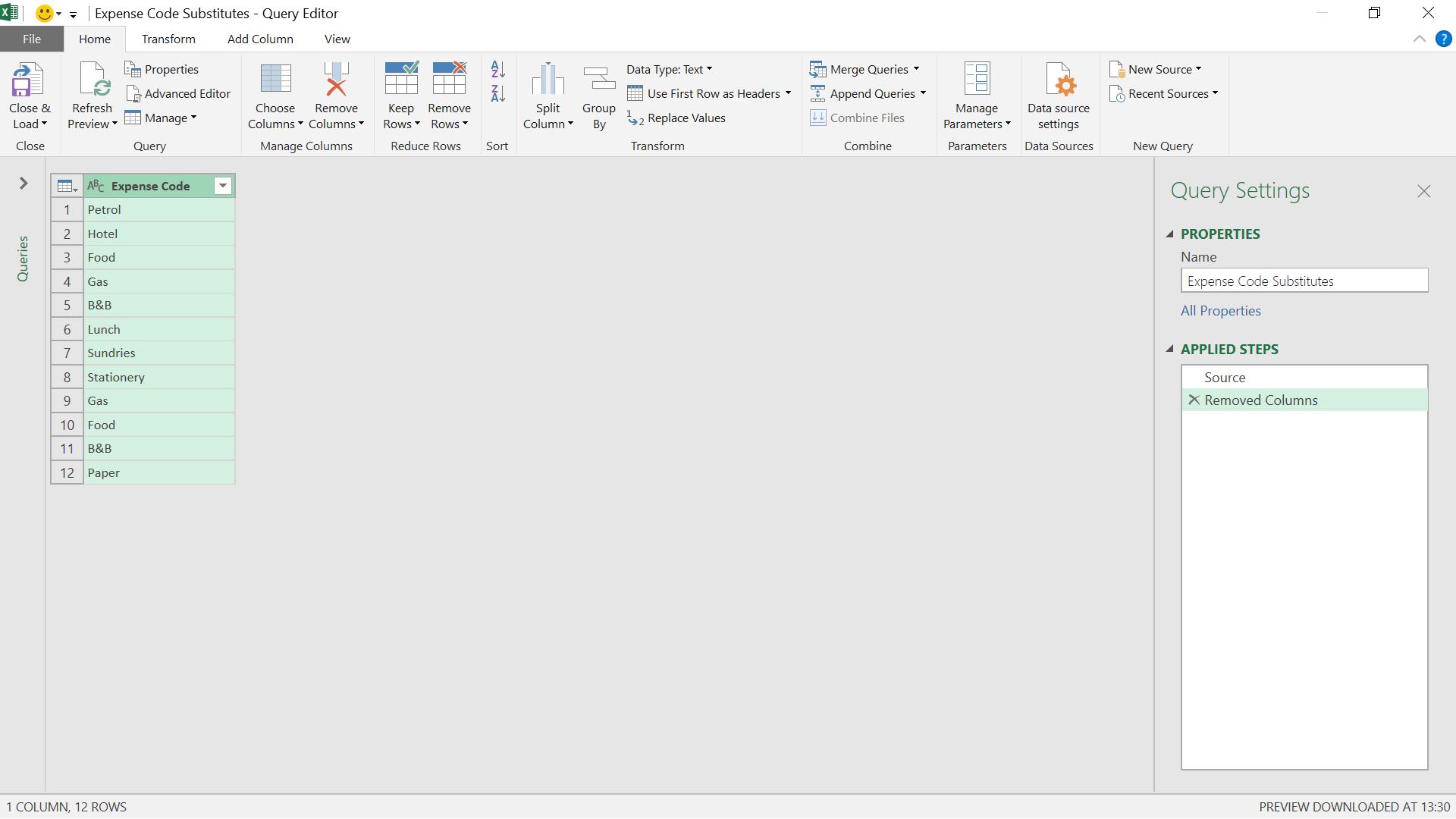
I have too many similar entries, so in the ‘Reduce Rows’ section, I choose the ‘Remove Rows’ dropdown and select ‘Remove Duplicate Rows’.
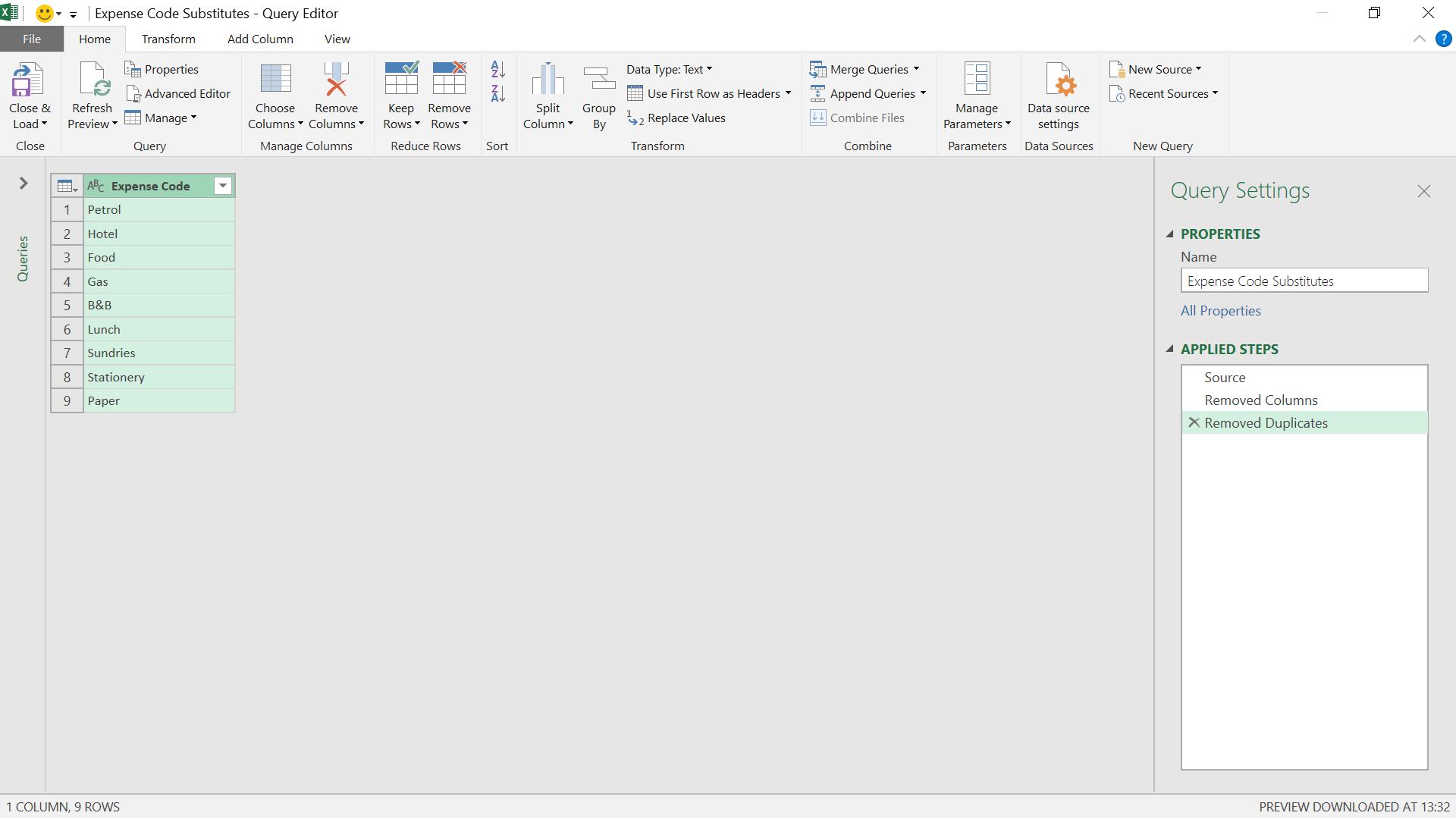
My next step will be to decide which cells are standard entries and which are substitute entries. Now that my initial data has been reduced to unique values, I need to go back to Excel to indicate manually which values need to be substituted with a standard value. I close and load to the existing worksheet.
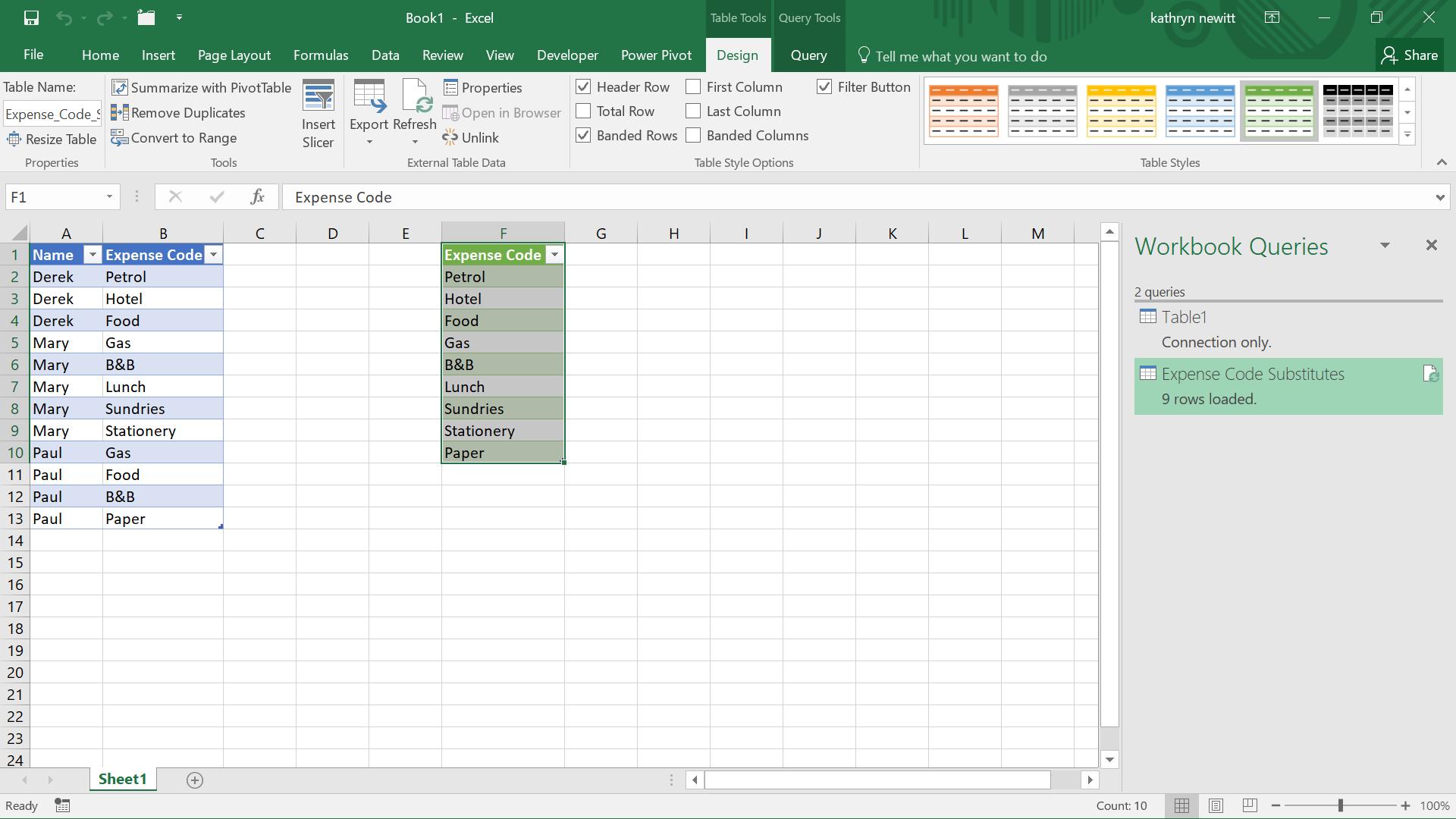
Next, I need to add a column to my new table called Substitute and reorganise my data so that Power Query can read what and when to substitute for each entered expense code.
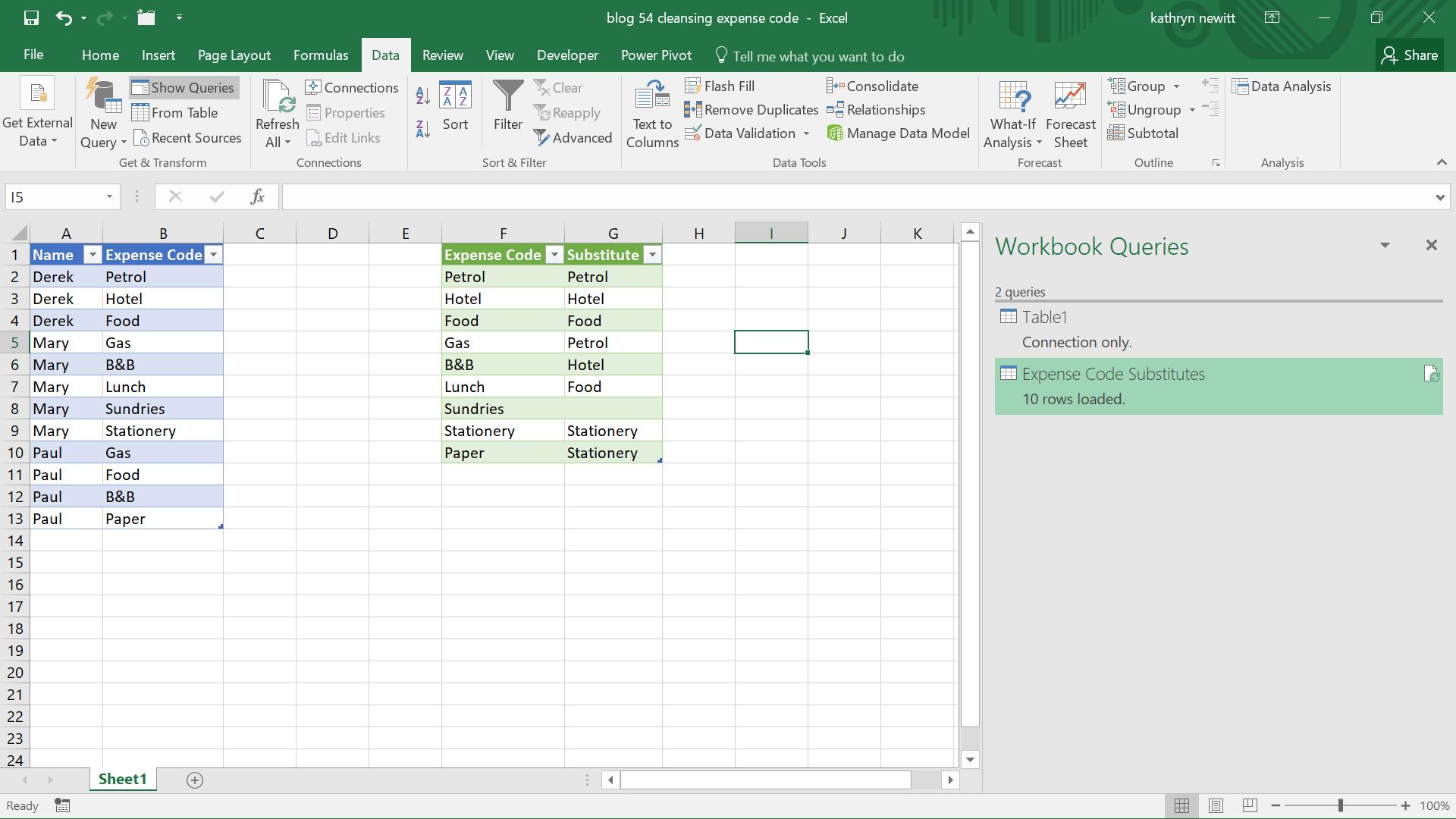
I have indicated substitutes where appropriate (and deliberately missed one!) I now need to create a new query for my edited table:
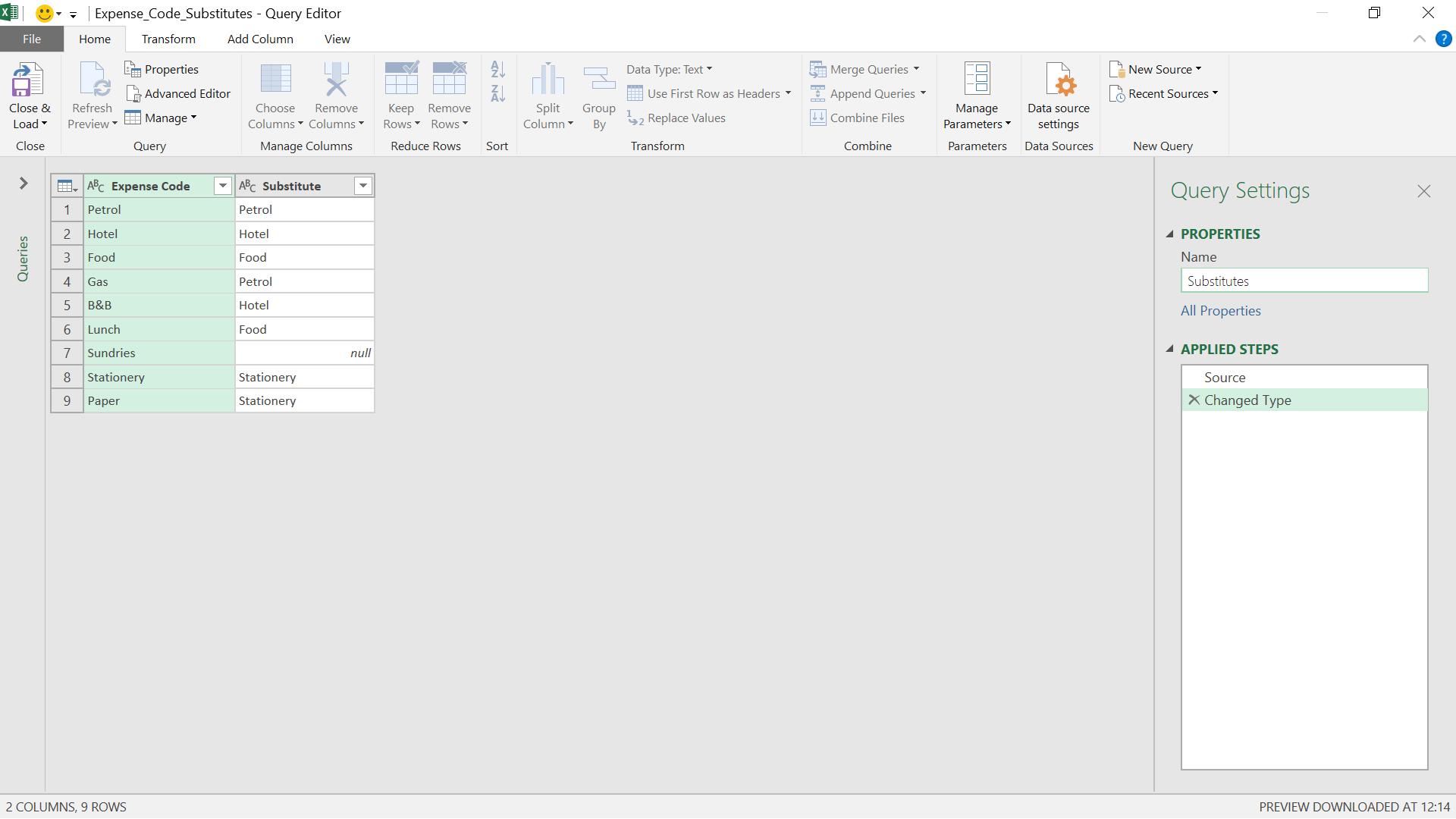
I call the new query ‘Substitutes’ and create it as connection only (since I have not changed it, I don’t need to load it).
Back in the worksheet, I right-click my original query ‘Table1’ and join it to ‘Substitutes’, using the ‘Merge’ option. Since the data in ‘Substitutes’ came from ‘Table1’ this is known as self-referencing.
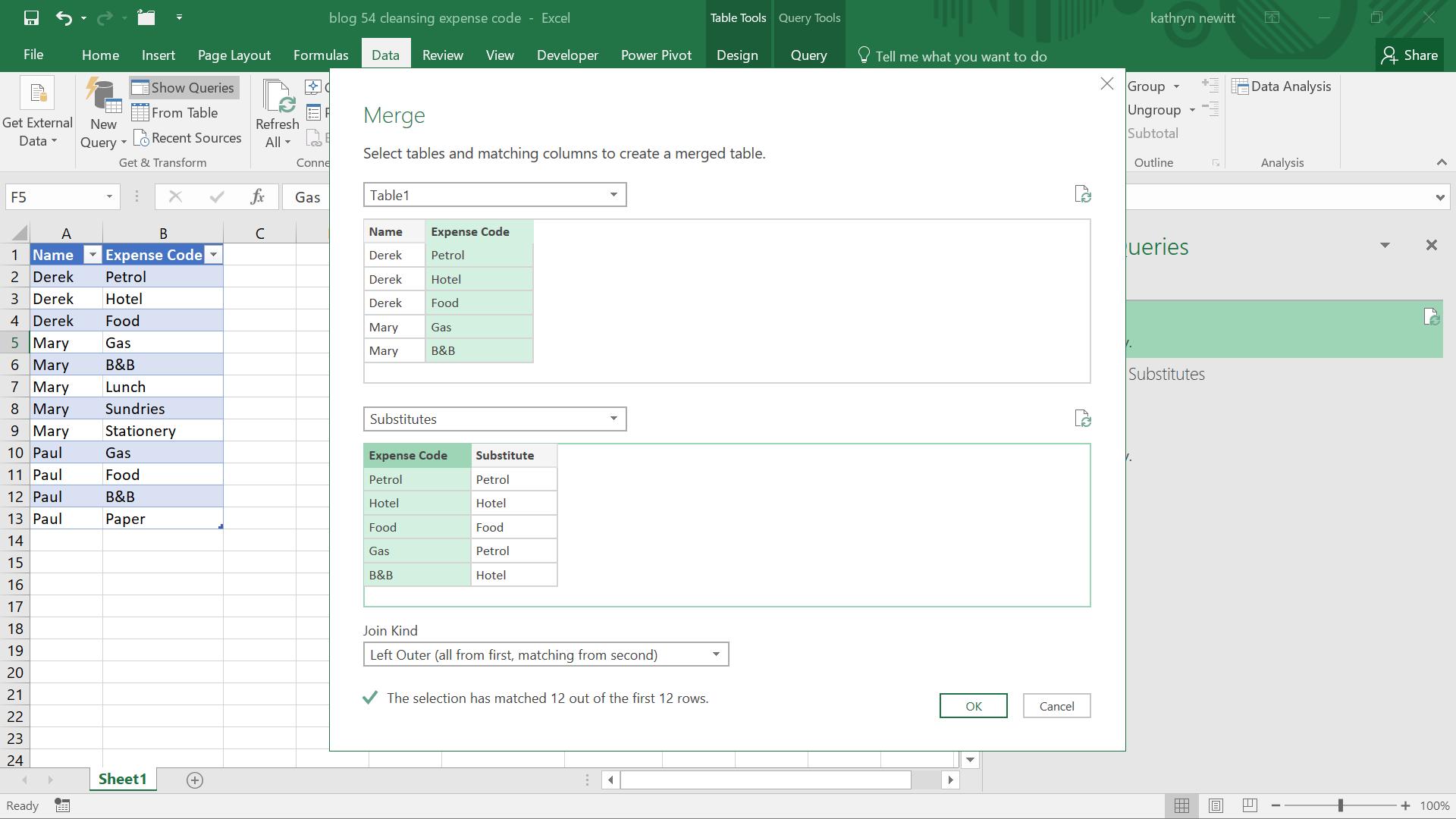
I select Expense Code from each table and choose the ‘Left Outer’ join option and click ‘OK’.
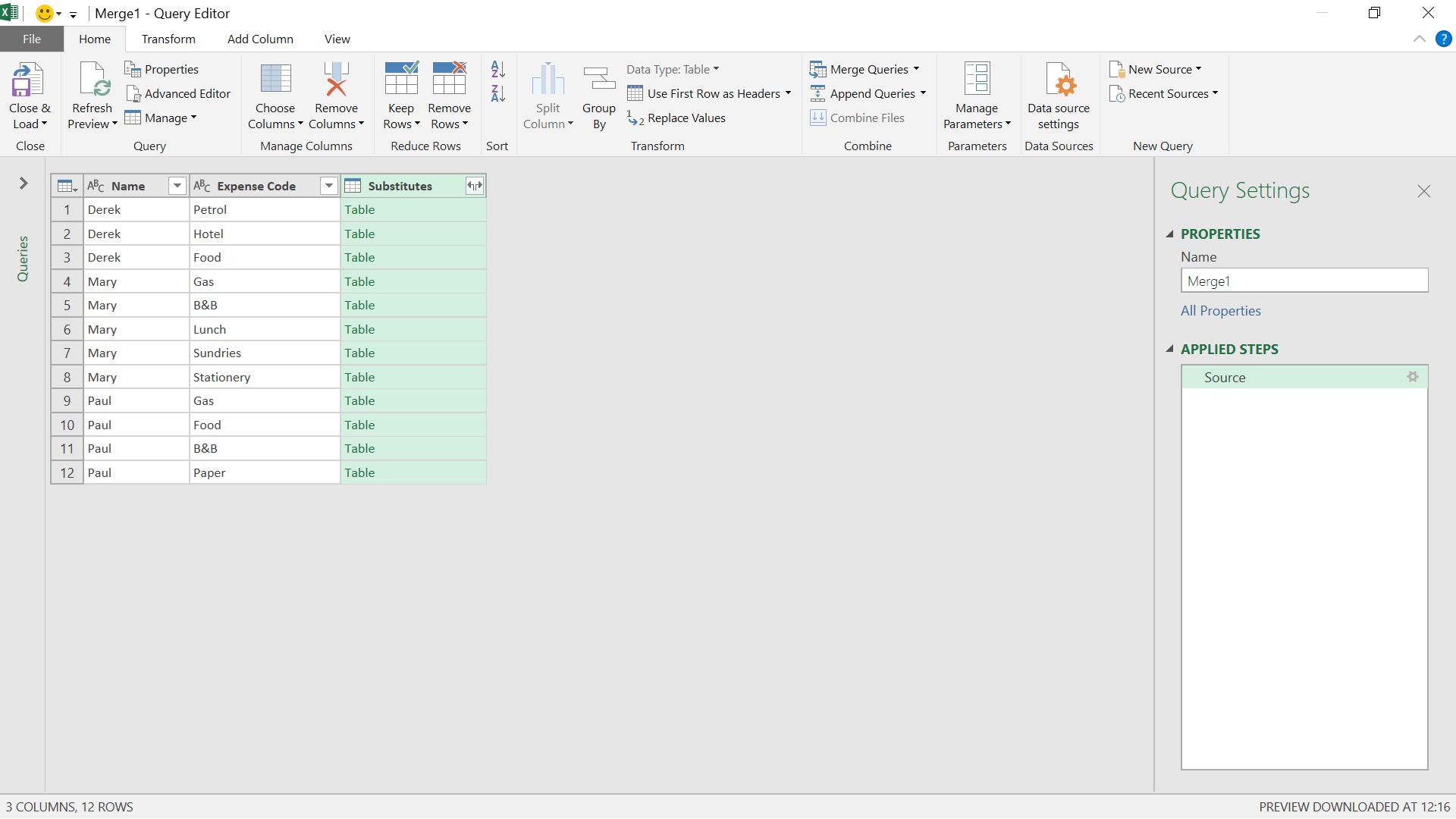
I can now expand my Substitutes column:
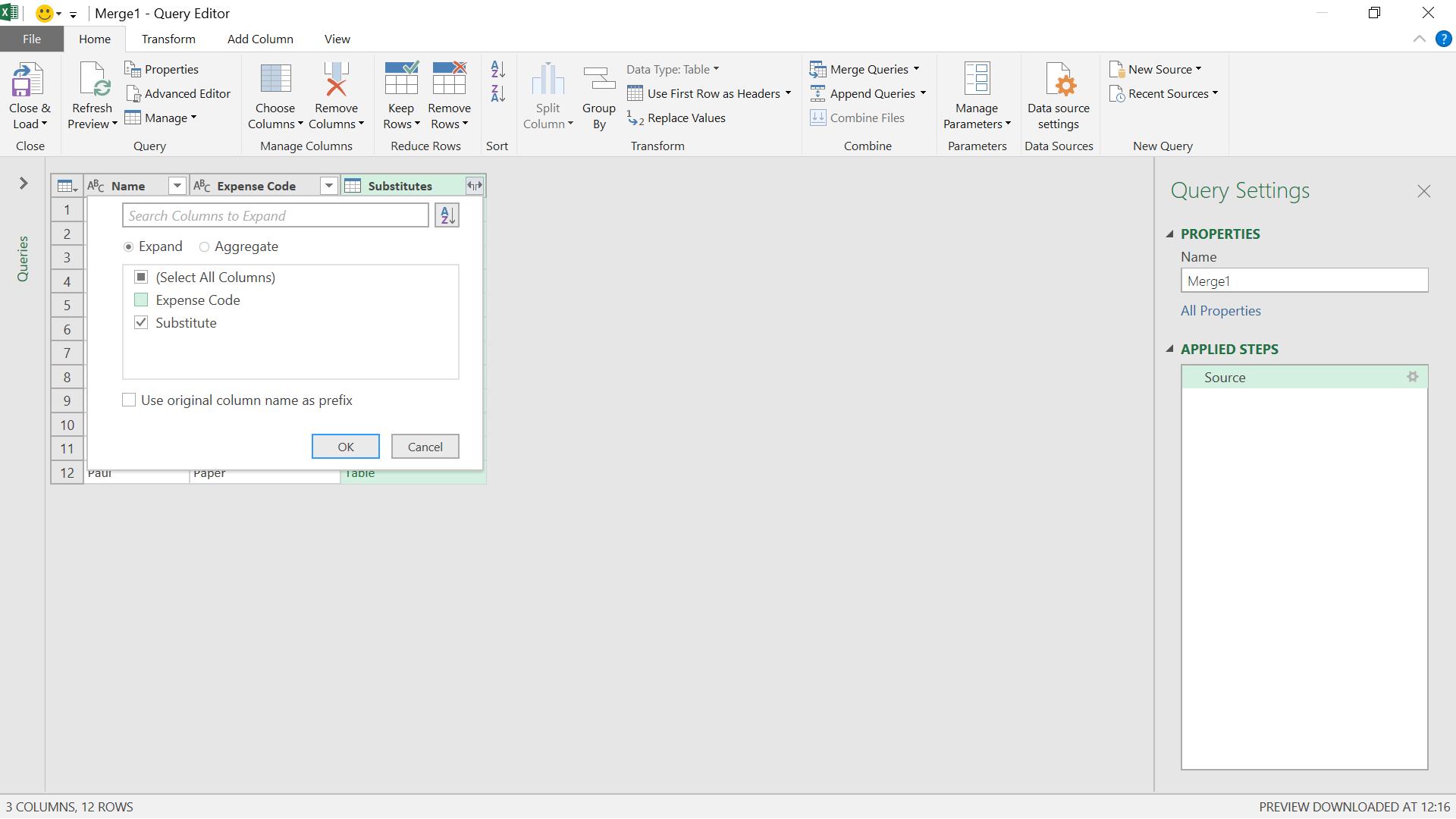
I only want the Substitute column from the ‘Substitutes’ table:
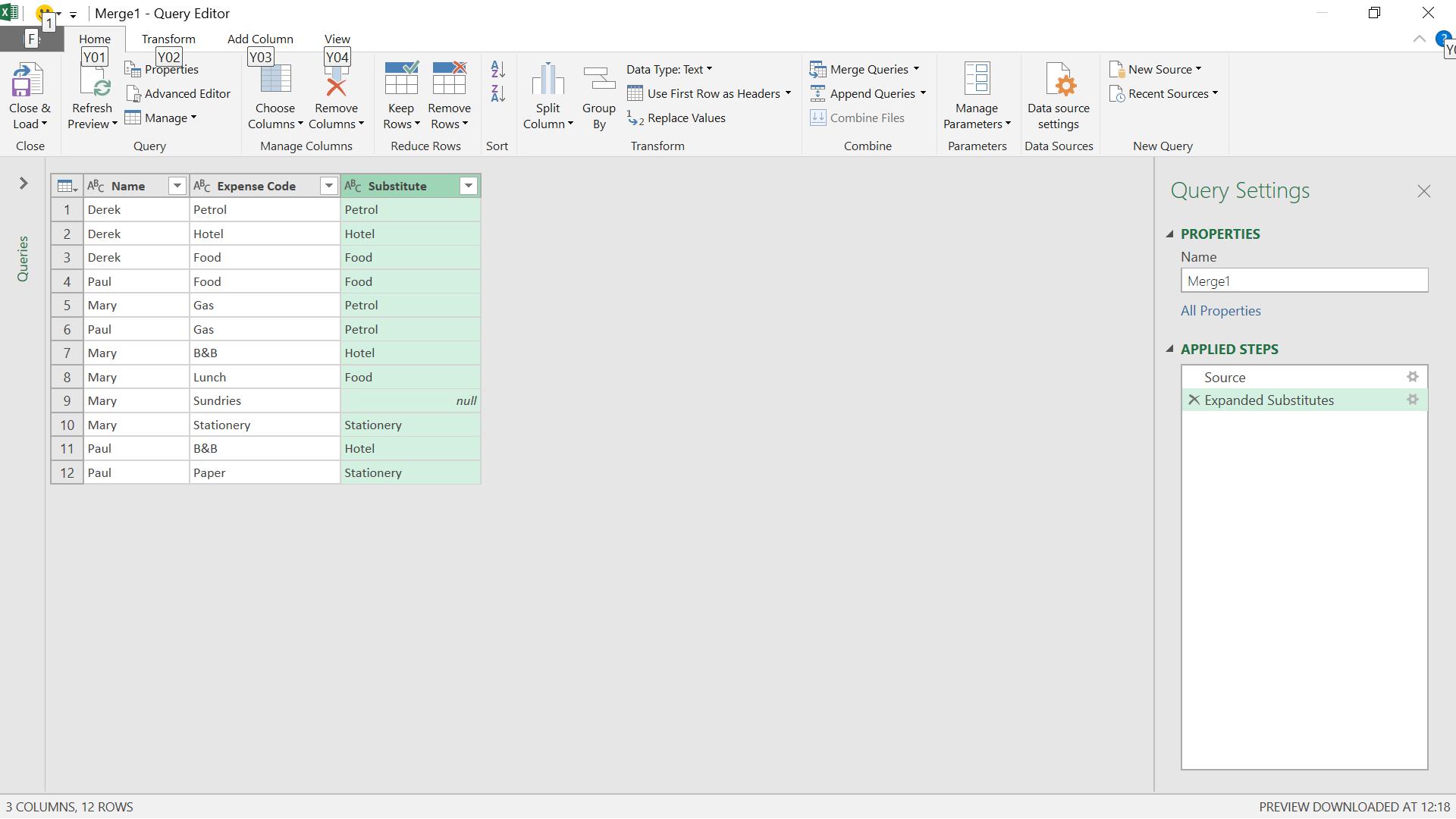
I can now delete the original Expense Code field and rename Substitute to be the new Expense Code… but wait, Mary has no substitute set up for ‘Sundries’ (see I missed one on purpose!). To show that everything can be refreshed, I continue with my deletion and renaming here, and load my query to the same worksheet.
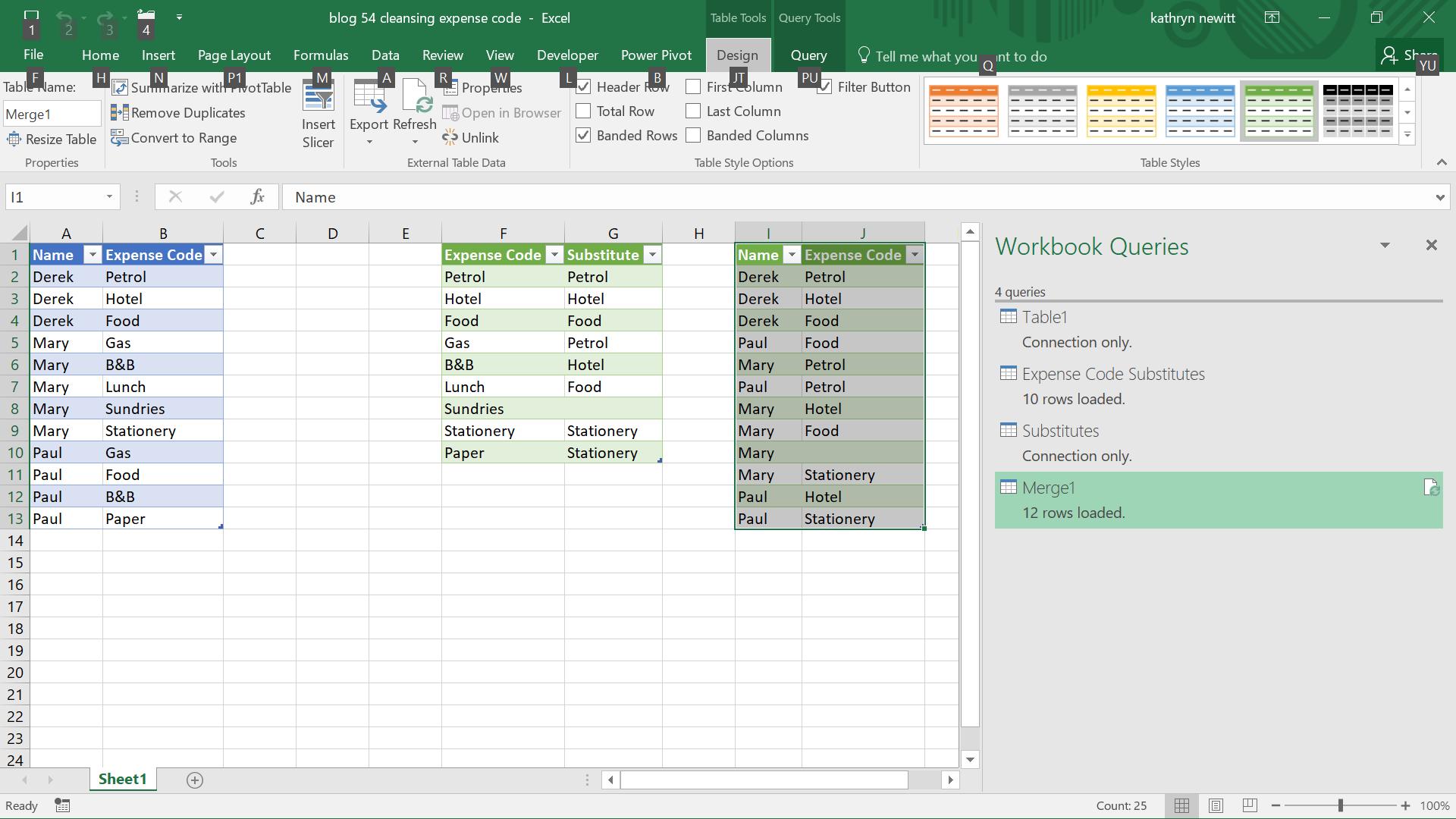
I manually edit my ‘Substitutes’ table to make sure all the substitutes are populated (including ‘Sundries’), and refresh the data using the ‘Refresh All’ option on the ‘Data’ tab.
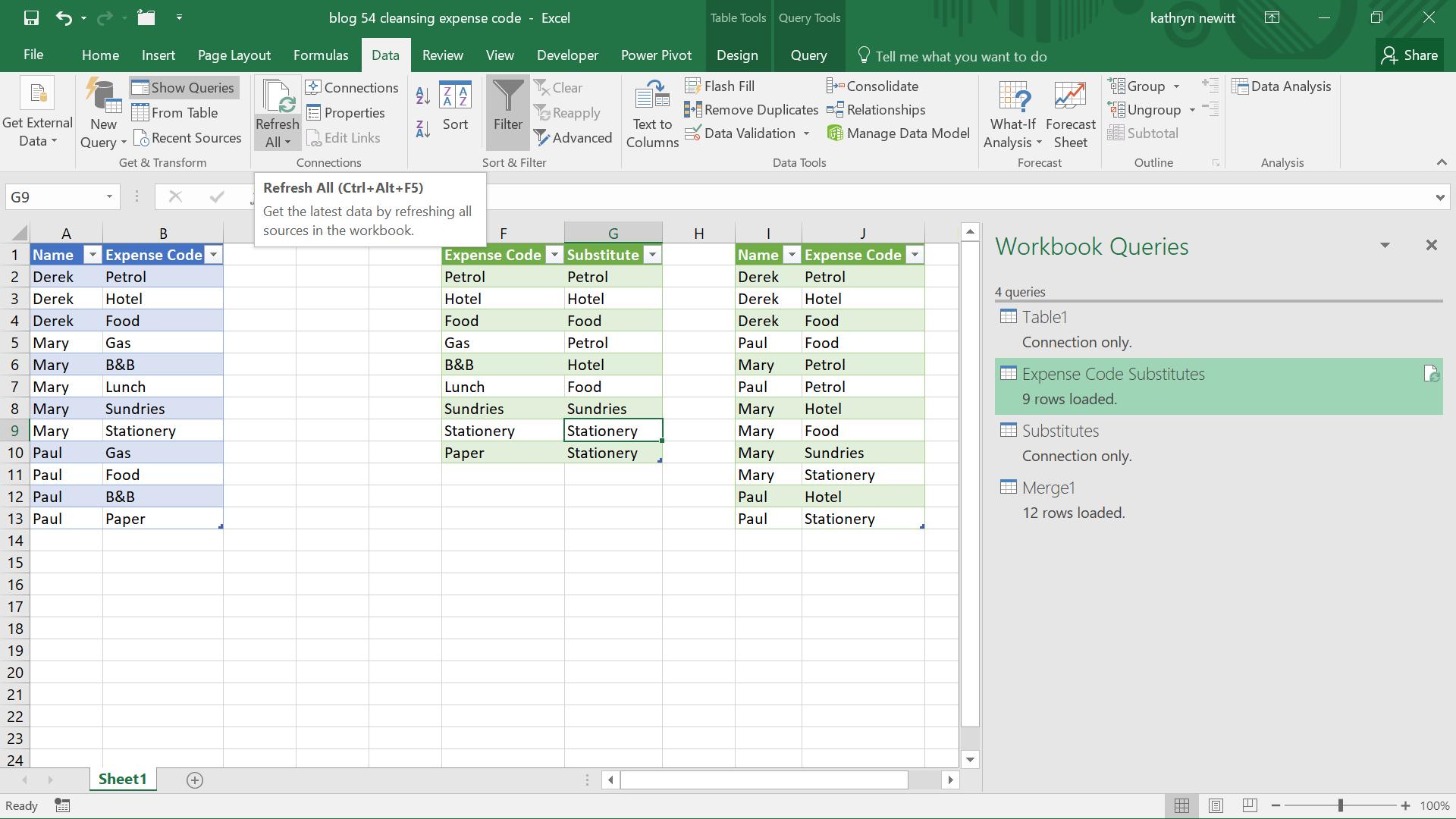
My data is now updated with standard expense code names. I will still need to maintain the substitute table, but I have no need to trawl through my data to find any non-standard entries that don’t already appear on my substitute table, as an update will add any unrecognised entries to my substitute table. To prove this, I add an ‘A4 folder’ to Paul’s expenses ready to add it to my table:
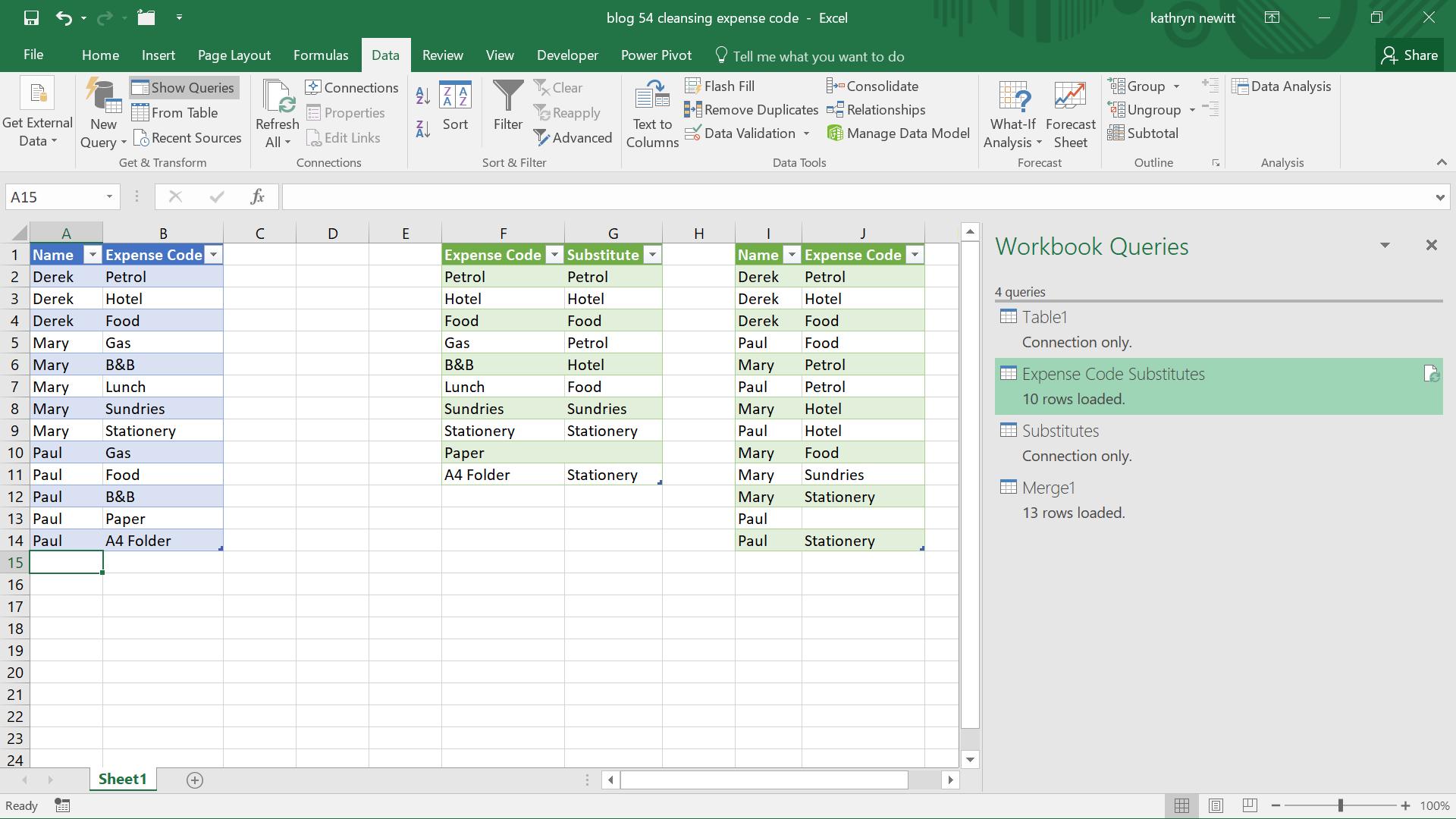
Obviously, the update is not quite sure how to treat the extra information in my manual table, but a line has appeared and I need to adjust the data. A new row has appeared for Paul in the final table. I simply update my manual table and refresh again.
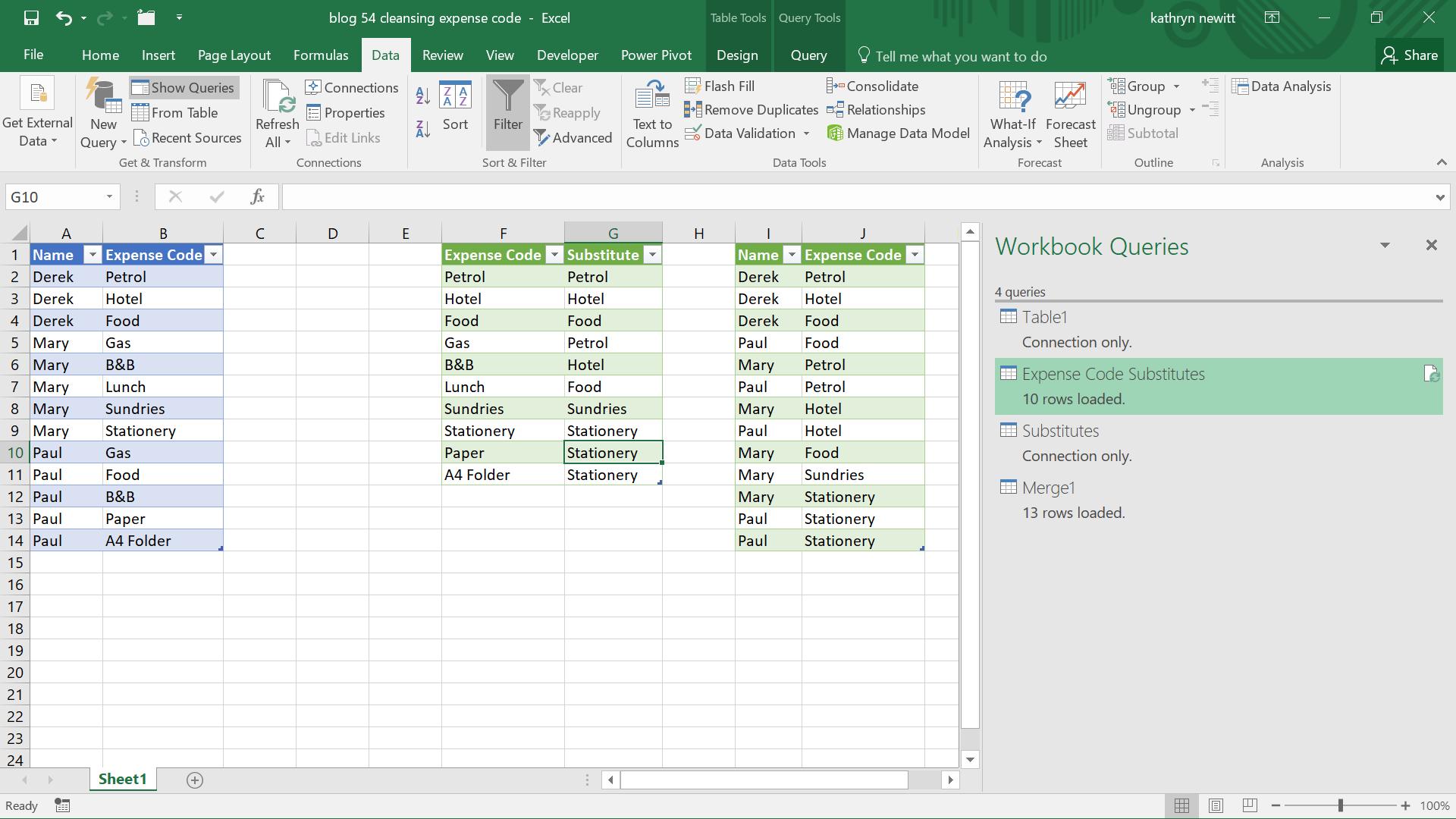
All the data is now showing the correct expense code, as required.
Want to read more about Power Query? A complete list of all our Power Query blogs can be found here.

